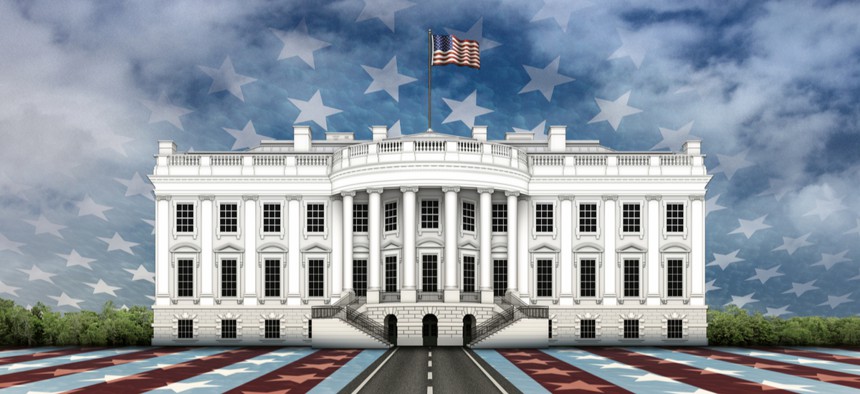White House Strategy Names 20 Emerging Technologies Crucial to National Security

Jim Larkin/Shutterstock.com
As part of the strategy, the administration is encouraging government agencies to research, develop and buy more emerging technologies.
The White House on Thursday rolled out a new strategy to obtain and retain global superiority in world-changing emerging technologies like artificial intelligence, data science and space tech, among others.
While the U.S. has been a technology leader for much of the last century, that supremacy is being challenged today.
“American leadership in [science and technology] faces growing challenges from strategic competitors, who recognize the benefits of S&T and are organizing massive human and capital resources on a national scale to take the lead in areas with long-term consequences,” according to the newly released National Strategy for Critical and Emerging Technologies.
The document promotes a “market-oriented approach” rather than “state-directed models,” which the administration claims “produce waste and disincentivize innovation.” At the same time, the strategy enables the government to “protect ourselves from unfair competition,” citing China and Russia, specifically.
“Strategic competitors, such as the [People’s Republic of China] and Russia, have adopted deliberate whole-of-government C&ET efforts and are making large and strategic investments to take the lead,” the strategy states. “As a result, America’s lead in certain C&ET sectors is declining. The United States will take meaningful action to reverse this trend.”
The strategy—developed by the National Security Council—melds with the National Security Strategy and “unifies the United States government effort to maintain worldwide C&ET leadership with our allies and partners,” it states.
The administration plans to bucket each critical technology into one of three tiers, putting the full force of the government behind the highest priority areas. For remaining technologies, the government will “contribute as a peer with allies and partners in high-priority C&ET areas, and manage technology risk in other C&ET areas,” the strategy states.
The document does not specify where the specific technologies listed fall in this hierarchy.
The strategy is molded around two pillars: promote the national security innovation base and protect technology advantage. Each pillar includes a litany of actions—13 and nine, respectively—geared toward speeding the innovation process and walling it off from foreign influence.
Under the first pillar, the administration plans to focus on building the workforce and investor base in the private sector to sustain advanced, quality research and development.
The pillar also includes prioritizing R&D in federal budgets, despite the administration’s yearly proposals to cut civilian government R&D spending by tens of billions of dollars.
The first part of the strategy also calls for more use of emerging tech by government agencies, whether developed in-house or purchased from commercial vendors, and encourages “state and local governments to adopt similar actions.”
The second pillar focuses on preventing foreign adversaries from getting an advantage off of innovations led by the U.S. and its partners.
The priority actions under this pillar include creating and supporting international norms against theft of intellectual property, increasing security in the R&D pipeline and restricting exports of specific technologies to adversarial countries.
The strategy includes an initial list of 20 technologies identified as critical by the National Security Council:
- Advanced computing
- Advanced conventional weapons technologies
- Advanced engineering materials
- Advanced manufacturing
- Advanced sensing
- Aero-engine technologies
- Agricultural technologies
- Artificial intelligence
- Autonomous systems
- Biotechnologies
- Chemical, biological, radiological and nuclear mitigation technologies
- Communication and networking technologies
- Data science and storage
- Distributed ledger technologies
- Energy technologies
- Human-machine interfaces
- Medical and public health technologies
- Quantum information science
- Semiconductors and microelectronics
- Space technologies
National Security Council staff plan to update the list annually, including garnering feedback from federal agencies on needs, uses and priorities.



